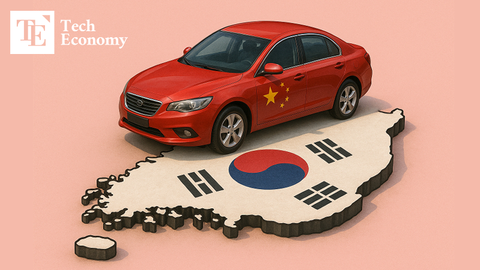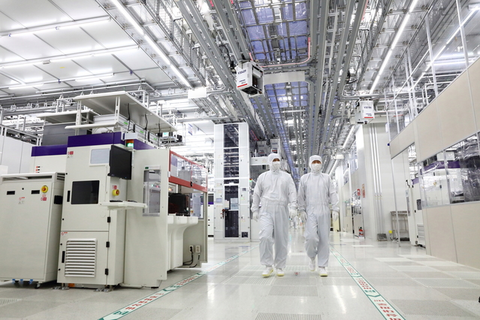Despite Record Profits, U.S. Companies Move to Cut Jobs, AI-Driven Layoffs Become a Reality
Input
Modified
Workforce Inefficiencies Reduced After AI Adoption Wave of Layoffs Accelerates Across U.S. Industries Companies Restructure Hiring Strategies Around AI Priorities

Major corporations across the United States are initiating workforce reductions. This trend appears to stem from two key factors: the rapid advancement of artificial intelligence (AI), which is increasingly capable of replacing human roles, and a growing perception that large organizational structures are becoming obstacles to corporate growth.
Layoffs Persist Despite Soaring Profits: AI-Driven Downsizing Accelerates Across U.S. Corporations
Across the United States, major corporations are initiating widespread layoffs. This trend is largely being driven by the growing role of artificial intelligence (AI) in replacing human labor and a rising belief that large organizational structures are becoming barriers to long-term growth.
According to the Wall Street Journal (WSJ) on the 18th (local time), Procter & Gamble (P&G), a global consumer goods giant, recently announced plans to lay off 7,000 employees, accounting for about 15% of its non-manufacturing workforce. P&G described the move as “an effort to build broader roles and smaller teams.”
Other companies are following suit. Estée Lauder, one of the world’s largest cosmetics companies, and Match Group, which operates several dating apps, have each recently cut 20% of their managerial staff. IT company Hewlett Packard Enterprise (HPE), which announced 3,000 layoffs in March, now reports a total workforce of 59,000—the smallest in a decade.
While layoffs during economic downturns are not uncommon, the WSJ emphasized that the current wave is different. “In typical cycles, companies downsize during recessions and hire again during recovery,” the paper explained. “But this time, the cuts are happening despite a surge in both sales and profits.”
Indeed, U.S. corporations posted record profits last year. According to the Federal Reserve Bank of St. Louis, operating profits at American firms reached USD 4 trillion by the end of 2023—more than double the level in 2010. Corporate earnings accounted for 16.2% of the nation’s total income, around 3 percentage points higher than the 2010–2019 average of 13.9%.
Amazon CEO Acknowledges First Major AI-Driven Layoffs in Big Tech
The advancement of AI is increasingly cited as a key driver of job cuts. According to the WSJ, AI technology has progressed to the point where it can now replace complex decision-making tasks traditionally performed by humans. For example, in logistics, AI can handle payment processing or inventory rerouting when supply chains are disrupted by natural disasters. Walmart has deployed AI agents that reduced the apparel production cycle by up to 18 weeks.
In a notable statement, Amazon CEO Andy Jassy became the first Big Tech leader to explicitly link job reductions to AI. In a company-wide memo on April 17, Jassy warned employees that AI will soon reduce the need for certain roles while creating demand for new ones.
“Some of the work people do today will require fewer human resources because of AI,” he wrote, “but we will also need more people for new types of roles.” He added, “In the coming years, increased efficiency through AI could lead to a reduction in total white-collar headcount.”
Jassy called generative AI a “once-in-a-lifetime technological shift,” noting that it is already transforming the way Amazon interacts with customers and operates internally. “With AI agents,” he said, “we can begin almost everything from a more advanced starting point. While some existing roles will disappear, others will emerge.”
Since 2022, Amazon has undergone multiple rounds of layoffs. More than 27,000 employees were let go in the first wave alone, and several divisions were shut down. Citing sources, the WSJ reported that while another round of mass layoffs like those in 2022 or 2023 is unlikely, the company will likely experience gradual workforce reductions over time through attrition.

"Large Scale Seen as Obstacle to Growth": AI Spurs Shift Toward Leaner Teams
In addition to automation, the advancement of AI is pushing companies to cut back on future hiring. For instance, Duolingo, a language learning service provider, recently announced it would gradually phase out contract workers to delegate more tasks to AI systems. Similarly, Shopify, the e-commerce platform, instructed employees to justify new hire requests by explaining why AI cannot perform the job.
A growing number of businesses now believe that smaller organizations are more conducive to growth. According to the Wall Street Journal (WSJ), “There’s a rising belief that having too many employees can slow down a company’s progress,” and “there is also a perception that current employees will work harder if the workforce is leaner.” The report added, “Many U.S. companies now believe that fewer employees can lead to faster growth.”
Even startups are not exempt from this trend. Jolie, a company that sells high-end filtered showerheads, is projected to reach $50 million (approx. 69 billion KRW) in annual revenue this year—with just five employees. CEO Ryan Babenzien remarked, “Hiring isn’t as essential as it used to be. A decade ago, building a $50 million business with fewer than five people would have been nearly impossible, but today it’s becoming increasingly common.”




















